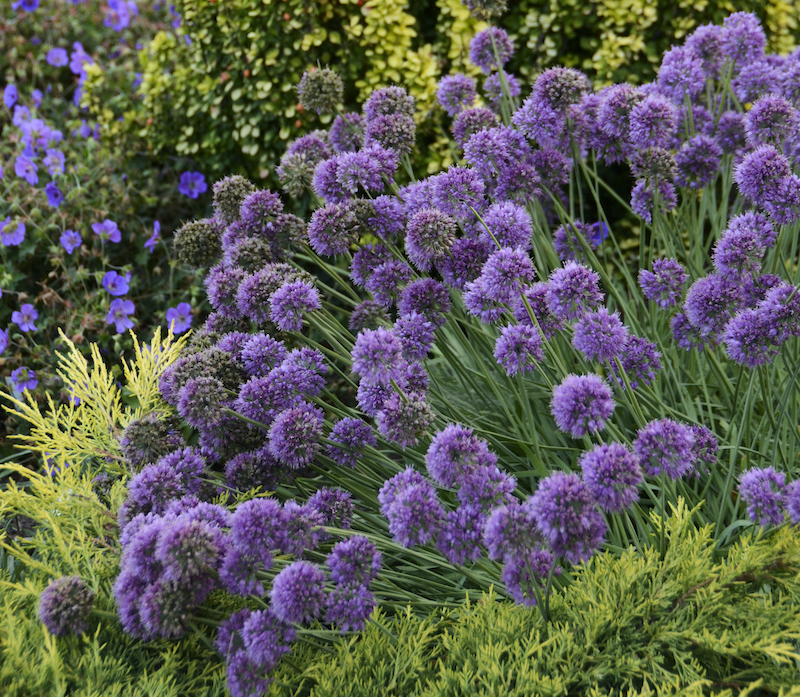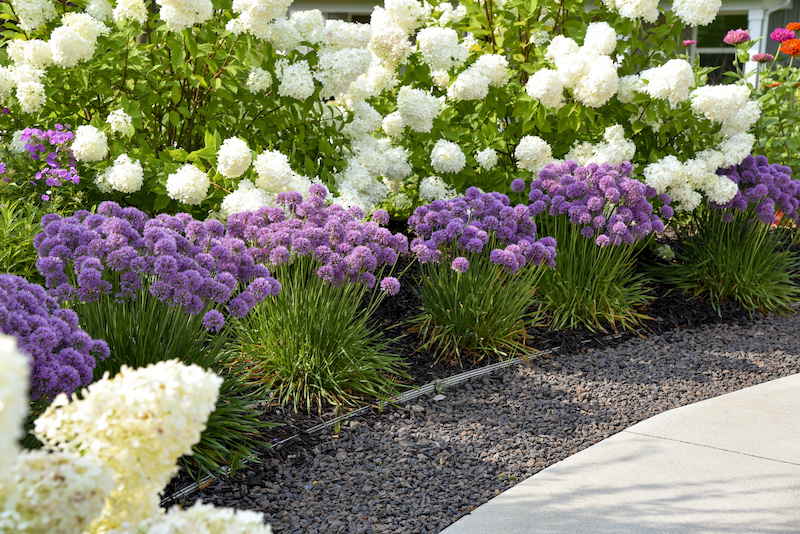Alliums come in edible varieties that include onions, garlic, leeks and chives and perennial, ornamental types that are known mainly by their cultivar name. Globemaster, Millennium, Schubertii and Giant Allium and Christophii are just a few of the most popular perennial alliums. Ornamental alliums are planted as bulbs in the same way that other spring blooming bulbs are planted. The ornamental bulbs are very similar to lily bulbs, in that they have a scaled appearance and are not smooth like edible onions. The key to keeping ornamental alliums growing well is to give them the best start possible.

What You Need To Plant Alliums
- Hand spade or bulb planting tool
- Slow-release, granular bulb fertilizer
- Mulch made from organic materials such as finely shredded bark or compost
- Watering can
- Garden location in full sun that has good drainage.
Where to Plant Alliums
Alliums need full sun to grow strong and tall. A spot that has shade early in the morning or late in the day is also acceptable. The soil can be any pH from slightly acidic to slightly alkaline, but it must have excellent drainage. Consider what the drainage is like during the winter months. Any plant that grows from a bulb will not tolerate sitting in water during the summer or especially in the winter.

Allium Spacing
The spacing for planting bulbs and ornamental Alliums is much closer than for other perennials. The overall height and spread can vary between cultivars. Planting in large groups of one cultivar has more impact than dotting single bulbs around a large space. The average spacing between bulbs is 3-4 inches. Growing ornamental alliums closely will not only fill in an area quickly, but the taller varieties will help support each other as they grow, requiring less or no staking. Alliums will multiply by making small bulbils every year. As those bulbils mature into full-size bulbs, they will also begin to flower. Dividing a patch of ornamental alliums is easy to do, but not an annual maintenance issue.

Steps To Plant Alliums
Ornamental alliums are planted like any other bulb. The optimum time to plant is in the fall before any hard freezes. Gardeners in the colder hardiness zones will want to plant in September while those in the warmer zones can wait until later in the fall. Some plant nurseries sell container-grown alliums that can be planted any time of the year. Generally, early spring will be the time to find container-grown plants.
Step 1 - Find a location with part shade to full sun and well-draining soil
Step 2 - Dig a hole that is twice as deep as the size of the bulb
Step 3 - Scatter a small handful of granular bulb fertilizer in the base of the hole
Step 4 - Place the bulb in the hole with the roots pointing down and the pointy side up.
Step 5 - Fill in the planting hole and firm down gently making sure there are no air gaps
Step 6 - Water the bulb in well
Step 7 - If planting a container-grown allium, dig the hole the twice as wide and as deep as the pot it is growing in.
When to Plant Alliums
Ornamental Alliums are best planted in the fall as a bulb. Container-grown plants available in the spring will already have established root balls and need to be planted immediately after buying. Plants always benefit from being transplanted on an overcast and/or cooler day. The plant will lose less moisture and suffer less transplanting shock.
Transplanting Alliums
Dividing Alliums is a job that does not need to be done often. The bulbs multiply by growing miniature bulbs around their base, called bulbils. Those bulbils come off the parent bulb and develop into mature plants after 2-3 years. Transplanting alliums to another part of the garden should be done after the plant has finished blooming and the strappy foliage begins to die back. Deadhead the plant and dig up the roots carefully, keeping the bulb intact and undamaged. Replant at the same depth as it was previously. Cutting the foliage back by half will lessen the transplant shock and help the bulb to focus all of its energy into establishing new roots.
 |
Author Robbin Small - Published 7-19-2022 |
